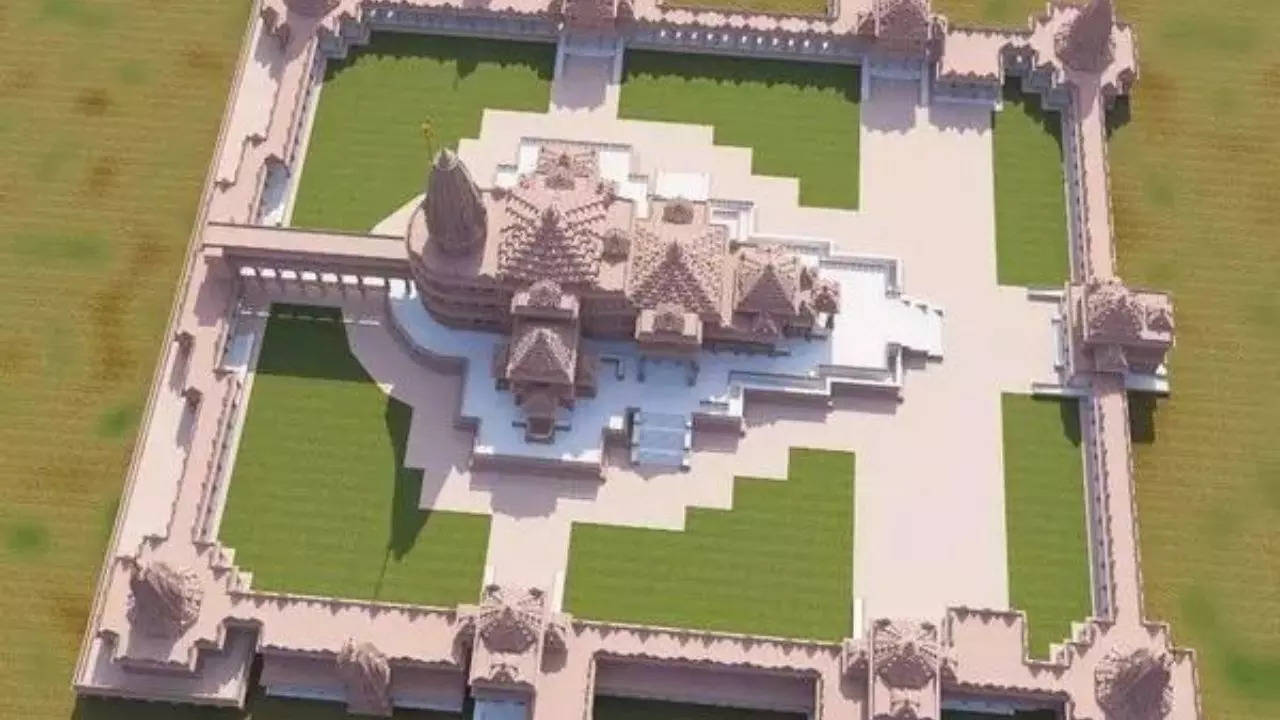Millions of people in India place great cultural, religious, and historical value on the Ram Mandir in Ayodhya. For many years, there has been much discussion, controversy, and litigation around the construction of this temple, which is devoted to Lord Ram. One theory holds that Lord Ram was born in Ayodhya.

Prime Minister Narendra Modi performed the foundation stone laying ceremony for Ram Mandir on 5 August 2020. The temple, supervised by the Shri Ram Janmabhoomi Teerth Kshetra Trust, is under construction and is scheduled for inauguration on 22 January 2024. However, the temple has faced controversies over alleged donation misuse, sidelining of activists, and BJP politicization. In this article, we will delve into the features of Ram Mandir, focusing on the architecture of the temple.
Ram Temple’s Features
Ram Mandir, a temple in North India, is a testament to the traditional Nagara architecture style. The temple, originating from Nagara, features tall pyramidal towers called Shikharas with a Kalash at the top. The temples are three-storied, with each floor 20 feet tall, and a total of 392 pillars and 44 doors. The innermost sanctum, Garbhagriha, houses the deity Bhagwan Shri Ram, the idol of Shri Ram Lalla.
The temple consists of five Mandaps, including Nritya Mandap, Rang Mandap, Sabha Mandap, Prarthna, and Kirtan Mandaps. The temple’s intricate designs and intricate carvings add to its unique and impressive architectural features.

Devi Bhagwati is a revered deity in the Shri Ram Janmbhoomi Mandir complex, surrounded by a Parkota. The complex features four Mandirs dedicated to Surya Dev, Devi Bhagwati, Ganesh Bhagwan, and Bhagwan Shiv. The complex also houses other Mandirs dedicated to Maharshi Valmiki, Maharshi Vashishtha, Maharshi Vishwamitra, Maharshi Agastya, Nishad Raj, Mata Shabri, and the consort of Devi Ahilya. The Mandir is built with a 14-meter-thick layer of roller-compacted concrete, and a Pilgrims Facility Centre (PFC) is being constructed.
Ram Mandir in Ayodhya Constructed in Nagar Style; No Iron Was Used
The Shri Ram Janmabhoomi trust has constructed a three-storied temple in the traditional Nagar style, featuring a sanctum sanctorum with a Shri Ram Darbar and five mandaps. The temple complex includes a sewage treatment plant, water treatment plant, fire safety water supply, and an independent power station. The complex also includes a Pilgrims Facility Centre (PFC) with a capacity of 25,000 people, medical facilities, and locker facilities.

The Parkota, a rectangular compound wall, surrounds the temple, and it features four temples dedicated to Surya Dev, Devi Bhagwati, Ganesh Bhagwan, and Bhagwan Shiv. The temple complex is designed with a focus on environmental conservation, with 70% of the 70-acre area left green with no iron used.
One of the three sculptors, Arun Yogiraj, who created Ram Lalla’s idols
Yogiraj, a renowned sculptor from Mysuru, has returned to his family profession after an MBA degree. His works include a 28-feet monolithic black granite stone sculpture of freedom fighter Subhash Chandra Bose for Delhi’s India Gate, a 12-feet Adi Shankaracharya idol for Kedarnath, Uttarakhand, India’s largest 10-feet monolithic,
white marble stone sculpture of Sri Ramakrishna Paramahamsa in Mysuru, and sculptures of Lord Panchamukhi Ganapathi, Lord MahaVishnu, God Buddha, Nandi, Swami Shivbala Yogi, Swami Shivakumara, and Goddess Banashankari installed at various temples across India.

The Trust instructed the three sculptors to create an idol that resembled a five-year-old and was 51 inches in length. Yogiraj selected the Krishna Shila stone from HD Kote, a unique stone that does not react to liquids and has been used in Karnataka for 1,000 years. The Trust will install one of the three idols inside the sanctum, while the other two will be placed within the temple premises.












Comments 2